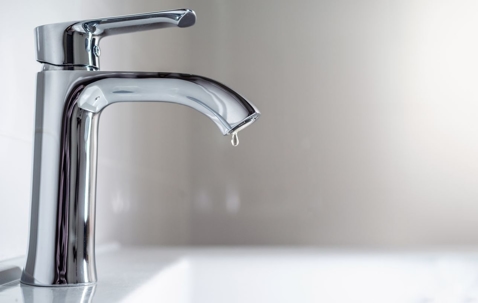A leaky faucet can be a constant annoyance and a significant waste of water. While it may seem like a minor issue, ignoring it can lead to higher water bills and potential damage to your plumbing system. In this blog post, we will provide you with step-by-step instructions on how to fix a leaky faucet, helping you save money and conserve water.
Identifying the Problem
The first step in fixing a leaky faucet is identifying your type of faucet. There are four common types: compression, cartridge, ceramic disk, and ball faucets. Each type has different mechanisms; understanding how they work is crucial for a successful repair. We recommend consulting the manufacturer's instructions or seeking professional advice to ensure you have the necessary information.
Gathering the Tools
Before starting the repair, gather the necessary tools to avoid any interruptions. Here's a list of items you'll likely need:
- Adjustable wrench
- Screwdriver (Phillips or flathead, depending on your faucet)
- Plumber's tape
- Replacement parts (such as washers, O-rings, or cartridges)
- Bucket or towels to catch any water
Step-by-Step Repair Guide For a Leaky Faucet
Step 1: Shut Off The Water Supply
Locate the water shut-off valves under the sink and turn them clockwise until the water flow stops. If you cannot find the valves, shut off the main water supply to your home.
Step 2: Disassemble The Faucet
Using the appropriate screwdriver, remove the handle and any decorative caps covering the screws. Once exposed, unscrew and remove the handle to access the inner components of the faucet.
Step 3: Inspect and Replace Faulty Parts
Inspect the components for any signs of damage, such as worn-out washers or O-rings. Replace these parts with new ones, ensuring they match the specific type and model of your faucet. Apply plumber's tape to the threads of any connections for a secure seal.
Step 4: Reassemble the Faucet
Carefully reassemble the faucet, ensuring all parts fit snugly. Tighten any screws or nuts as needed, but be cautious not to overtighten, as it can cause damage.
Step 5: Turn On The Water Supply
Once you've reassembled the faucet, slowly turn on the water supply. Check for any leaks and make any necessary adjustments. If the leak persists, it may indicate a more complex issue that requires professional assistance.
Contact Our Professionals At Lloyds Plumbing
Fixing a leaky faucet is a task that can be accomplished with the right tools and a little patience. By following our step-by-step guide, you can save money on water bills and prevent further damage to your plumbing system. Remember, if you encounter any difficulties or the problem persists, it's always best to seek the help of a professional plumber at Lloyds Plumbing. (805) 495-8766

